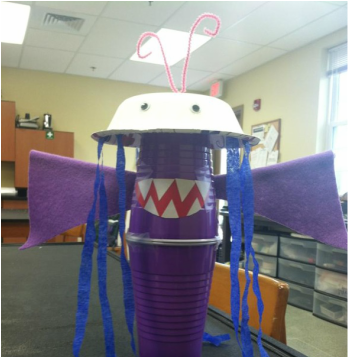|
This week, in addition to Coastal Art Camp, we have two junior camps for ages 13-15: Junior Naturalist Camp and Dangerous Creatures and Ocean Predators! While one camp is birding at Chincoteague National Wildlife Refuge, the other is carefully reeling in unique marine life in the waters near Wallops Island. Both camps allow young marine science enthusiasts to get their feet wet and see amazing creatures in their natural habitat, an ideal way to learn about the Eastern shore and its animals. Whether you prefer to actively seek out creatures in their natural habitat or make observations from afar, these camps provide students with unmatched hands on experiences. Read more about each camp below, and see what we’ve been up to this week: Dangerous Creatures and Ocean PredatorsMonday was the first day of camp, and in order to study these creatures, we had to capture them first. Educators Kirstie and Andrew, with the help of counselor Brian, lead a fishing trip on the research vessel to trawl for some marine organisms. During all programs at CBFS, participants are informed about four "dangerous creatures" that we often find in the Bay including: blue crab, mantis shrimp, oyster toadfish, and sting rays. These are local marine organisms that are potentially harmful to humans if one doesn't know how to properly handle each animal. The campers succeeded in pulling in three of the four creatures, all except the stingray. They took back a variety of other types of fish to study in the lab, including flounder, a seahorse, a sea star (not to be confused with a Sea S.T.A.R. Intern) a puffer fish, and other types of organisms common to the bay. Later in the week campers visited Wallops Island in pursuit of sharks and rays, engaged in an intellectual debate about top predators, and created their own dangerous creatures. Junior Naturalist CampOur Junior Naturalists started camp off in a similar way that our Dangerous Creatures camp did - on the research vessel! They collected fish and other organisms for their lab the next day to observe these creatures close-up and learn about their behaviors. Since both groups were collecting organisms, there was a great range of diversity in species for campers to explore.
Throughout the week, campers learned about barrier island ecology on Chincoteague, Assateague and Wallops Islands. They got their feet wet in the intertidal zone and got muddy in the marsh. The Junior Naturalists were challenged to make comparisons when they visited Kiptopeke State Park (located on the Chesapeake Bay) where they seined for organisms. The week also included a bird hike at the Refuge and a nocturnal beach exploration. The Eastern Shore has so many amazing natural spaces and with just a week it's difficult to see everything the Shore has to offer, but our junior naturalists definitely got the grand tour! Today all three of our summer camp groups - Coastal Art, Junior Naturalist, and Dangerous Creatures are enjoying a beach part on Assateague Island before parting ways! We look forward to having many campers back again next summer!
1 Comment
Jean Sanner
7/3/2015 02:10:03 pm
You'll have to share your secrets to exhausting my kid while keeping a huge smile on his face. Thanks for a great week!
Reply
Leave a Reply. |
About
Everything you need to know about CBFS's educational programs, visiting Chincoteague Island, and more! Categories
All
Archives
January 2019
|
CHINCOTEAGUE BAY FIELD STATION | 34001 Mill Dam Road | Wallops Island, VA 23337 | (757) 824-5636 | [email protected]








 RSS Feed
RSS Feed

